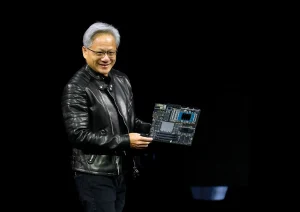Will the “AI bubble” collapse in late 2025 or 2026?

Is the “AI bubble” about to burst in late 2025 or 2026?
Market Concentration in the Tech Sector
In recent years, the landscape of the stock market has been significantly influenced by a handful of large tech companies. These behemoths have not only established themselves at the forefront of technological innovation but also command an overwhelming presence in stock indexes like the S&P 500 and other global benchmarks. Since late 2022, narratives centered around Artificial Intelligence (AI) have contributed to the majority of stock market gains, underscoring the sector’s pivotal role in shaping investor sentiment.
Vulnerability of Market Sentiment
A sense of fragility characterizes the current market landscape, where even a minor shock—be it the rise of an unexpected competitor or a regulatory shift—can lead to substantial fluctuations in market value. The illustrative episode involving DeepSeek in early 2025 serves as a stark reminder; a more affordable AI model emerging from China temporarily wiped out considerable market capitalization, highlighting how swiftly sentiment can shift.
Such rapid changes in narrative, whether fueled by innovation or market disruptions, can lead to swift revaluations of assets, emphasizing the precarious balance within the tech sector.
Capital Spending Trends: A Closer Look
Unprecedented Investment in AI Infrastructure
Currently, capital expenditures on AI infrastructure are reaching unprecedented levels. Major tech players are collectively pouring hundreds of billions annually into essential components like data centers, Graphics Processing Units (GPUs), and energy resources. Projections suggest that spending on AI-related capital expenditures could exceed $500 billion per year for several years to come.
Disparity Between Investment and Revenue
Despite the substantial investments being made, direct revenue generated from AI services remains relatively modest, with many segments generating revenue in the tens of billions rather than the hundreds. Reports from consultancy firms reveal a concerning trend: most enterprises exploring generative AI have not yet experienced a substantial impact on their profit and loss (P&L) statements.
Extensive studies indicate that while numerous AI initiatives may enhance individual productivity, they have yet to translate into meaningful improvements in overall margins or revenue growth. Many AI projects find themselves in “pilot mode,” lacking the full integration necessary to drive operational efficiency and profitability.
The Sustainability of Early Investments
Heavy initial investments can often be justified in the early stages of adopting new technologies. However, if the corresponding profit narrative remains ambiguous for too long, sustaining such expenditures becomes increasingly difficult. Companies may find themselves struggling to reconcile high investment levels with stagnant or unclear returns on investment (ROI).
Financing Dynamics in the AI Sector
A Feedback Loop of Investment
Some current AI contracts and investments appear to be structured to maintain ongoing optimism within the sector. Vendors frequently pre-purchase large quantities of cloud capacity from one another, and AI labs commit to significant financial outlays towards specific infrastructure providers. Such commitments are presented as future revenue growth from the providers’ perspective, even when buyers lack a clear strategy for offsetting these expenses.
This situation, while not fraudulent, creates a precarious feedback loop in which overly optimistic assumptions perpetuate themselves. If any individual piece of this structure falters, the entire loop could unwind rapidly, leading to broader implications for market stability.
Physical Constraints Affecting AI Development
Beyond Software: The Need for Infrastructure
The evolution of AI transcends mere software; it now encompasses concrete, copper, and substantial energy requirements. Modern AI data centers have the capacity to consume electricity equivalent to that of entire towns, raising concerns about the sustainability of such expansive energy needs.
Local Infrastructure Under Strain
As the demand for AI infrastructure surges, local energy grids, water supplies, and permitting processes are beginning to show signs of strain. Governments and regulatory bodies are increasingly questioning whether the unlimited expansion of AI infrastructure aligns with climate objectives and the limitations of existing local infrastructure.
Should energy or cooling constraints become significant hurdles in key regions, many of the currently planned capital expenditures may need to be adjusted accordingly. A definable halt in the expansion of AI resources can serve as a classic trigger for repricing of assets, resulting in widespread impacts on the sector.
The Future of AI and Investment Strategies
Navigating Uncertainties
Investors and stakeholders need to be vigilant as they navigate an evolving tech landscape marked by high capital expenditure and uncertain returns. The narrative surrounding AI, while positive in many respects, must contend with potential disruptions that can alter market dynamics dramatically.
Fostering Sustainable Growth
The call for sustainable practices is now louder than ever. A balance must be struck between making necessary investments for future AI advancements and ensuring that these expenditures translate into measurable ROI and long-term growth potential.
Conclusion: Shifting with the Times
In summary, while the dominance of large tech companies in stock markets is evident, their future success hinges on navigating the complexities of market sentiment, capital spending, financing dynamics, and physical infrastructure constraints. As the landscape continues to evolve, understanding these factors will be crucial for investors seeking to capitalize on the opportunities that AI presents, while also mitigating risks associated with its inherent uncertainties.
Thanks for reading. Please let us know your thoughts and ideas in the comment section down below.
Source link
#bubble #burst #late





